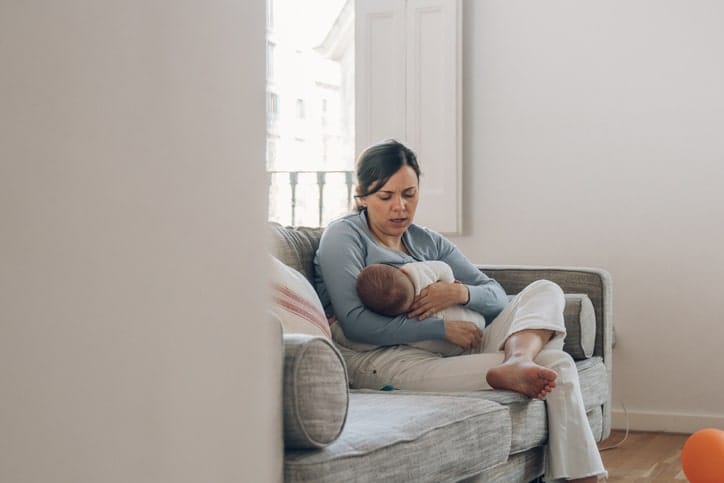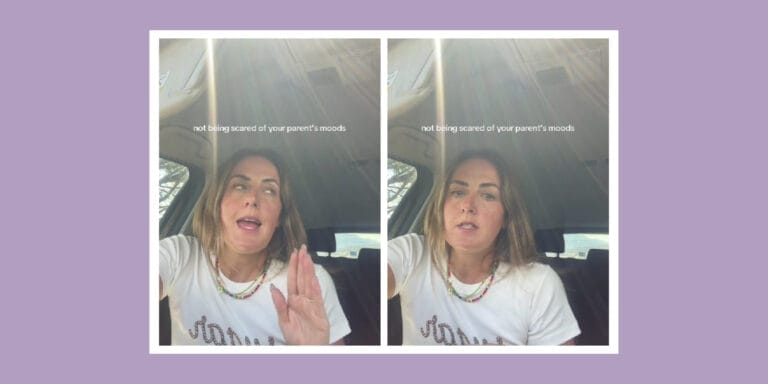I loved breastfeeding my child—until I didn’t

I had no idea what breastfeed aversion was until it happened to me.
When I became pregnant for the first time, I—like every other first-time mother—went into full obsessive research mode as soon as I saw that double-lined pee stick. I think I did more research in those months leading up to the birth of my daughter than I did in all of grad school combined. As my due date neared, I made note of all the superfoods that would boost my baby’s brain development and started practicing yoga to prepare my body for labor. My typical pregnancy worries evolved into a plethora of third-trimester anxieties, which ended up being mostly about breastfeeding.
Breastfeeding was never something I thought much about because. growing up, it was simply something that just was. My mother breastfed my seven younger siblings back to back from the year 1989 until 2005 without pause (I know).
I remember when I was 15, my high school boyfriend was over and we were awkwardly holding hands on the couch, hanging out with my family. My mom—mid-sentence—whipped out her boob to feed my youngest brother with no warning and no cover. As embarrassed as I secretly was by the shock of my teenage boyfriend getting a full view of my mom’s nipple, I knew that babies had to eat.
What I could not comprehend until I had a child of my own was that it wasn’t always as simple as just knowing the baby has to eat.
In fact, sometimes, the complexities that emerge around the act of breastfeeding have nothing to do with the baby at all. There can be a number of issues: latch, disinterest, pain, even an allergic reaction to the mother’s milk. Things I didn’t even think of. Until my hurricane-storm of research made it all I could think about. There was one notable thing missing, however.
Just minutes after a complicated birth, my daughter was placed on my chest and latched immediately. I cried in relief—she was alive, she was here, I was here and she was nursing. Those first little suckles, her staring at me through pale blue groggy newborn-vision, was the first time I felt true, unconditional love. And despite my pregnant worries, I was breastfeeding. It felt natural and joyful. I loved every moment.
Until I didn’t.
Aware of the benefits of extended breastfeeding, I planned on breastfeeding my child for two years. Spoiler alert: parenting consists of a lot of redirection on said “planned” journeys (I am not using the term “breastfeeding goal” because it sets the precedent that I failed when I didn’t fail).
The decision to wean earlier than two was a difficult and emotional decision. At 15 months, I began to feel strong periods of aversion when I’d nurse. Of course, at the time, I didn’t know to call it aversion—it simply felt like rage.
At least once a day while nursing, I would be overcome with a sense of panic: a blind rage coupled with the physical need to rip my skin off and exit the situation as quickly as possible. It was terrifying that I felt this way.
I’d put the baby down—her screaming in her own anger from being removed from her milk supply—and would run to another room, shut the door and cry under a foreboding tidal wave of guilt and shame and sadness. It was a continuous cycle that fed anxieties into the phenomenon itself, worsening it. Eventually, I couldn’t take it anymore.
Breastfeeding Aversion and Agitation (BAA) or Nursing Aversion (NA), is defined as, “the experience of anger and irritability, coupled with skin itching sensations while the infant is latched, and the urgent need to remove the feeding infant; shame and guilt about these feelings of anger and wanting to unlatch the child are also common.”
It is common enough to be informally known by mothers who’ve been through it and lactation consultants educated on it, but there is very little literature written about it. Unless you know of the condition in the first place, a Google search yields limited answers.
I was lucky enough to have a close friend who was also a lactation consultant (LC) help me. After a few weeks of struggling, I finally reached out to her. If not for that connection, I may not have been able to name my experience—and therefore understand and work through it—at all.
I continued to breastfeed until my daughter was 22 months old and the aversion eventually subsided. I was pregnant with my second child at the time. Even after I weaned, I couldn’t help but ask myself: Why do these experiences go unspoken? What happens when we do not talk about BAA?
My LC described Nursing Aversion akin to PTSD, and this makes so much sense to me. It is something we need to talk about, comfort each other in, educate one another on and communally heal. We need space to say: it is not your fault, breastfeeding mama.
As I’m struggling with continuing to breastfeed my second daughter for totally different reasons, this is what I’ve come to learn: Breastfeeding is as complicated as any source of intimacy in a relationship. In some ways, I view it as the first of many metaphorical journeys of mother-child relationship chapters—one of independence, overwhelming love and self-understanding.
It can be hard so we need support systems and specific language in place to help mothers make their best decisions when it comes to our miracle-giving bodies.


































